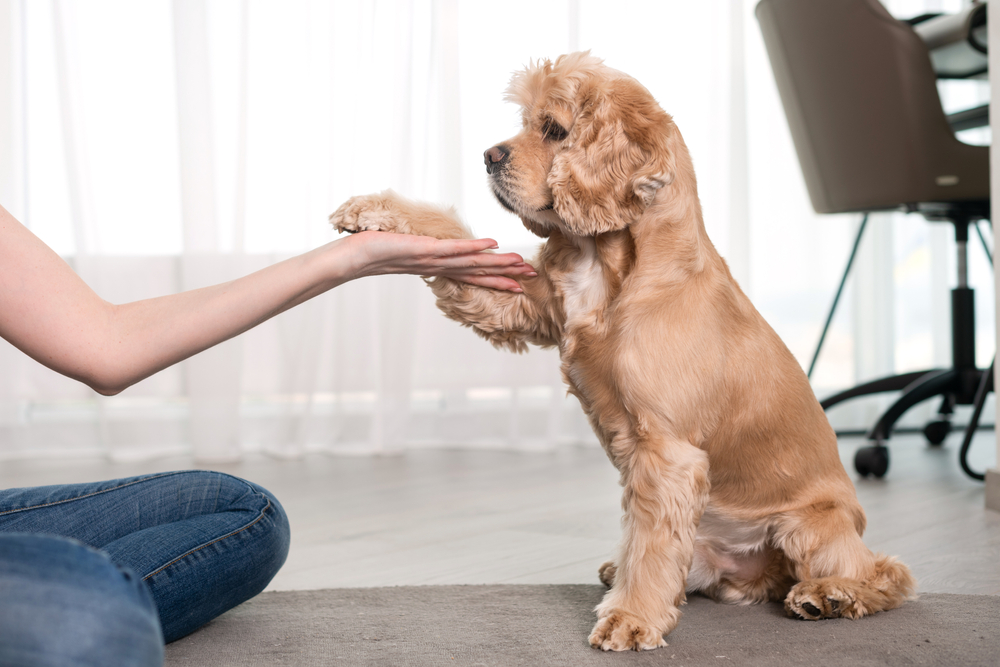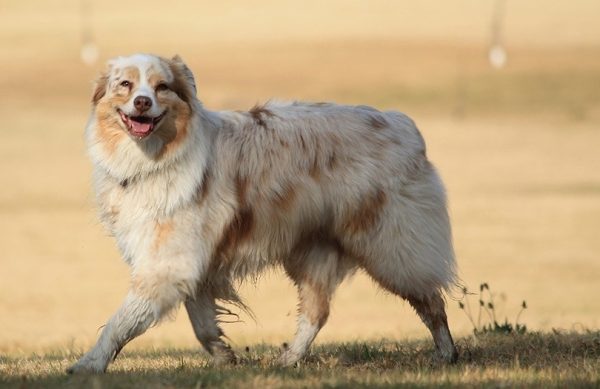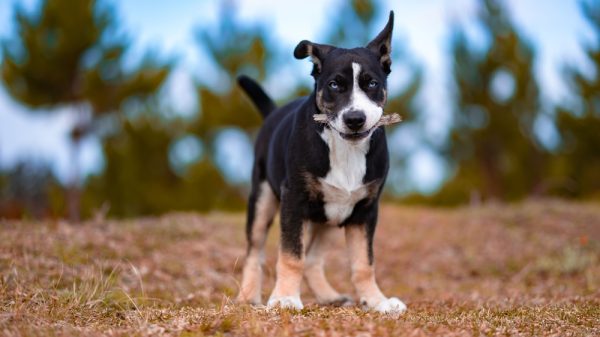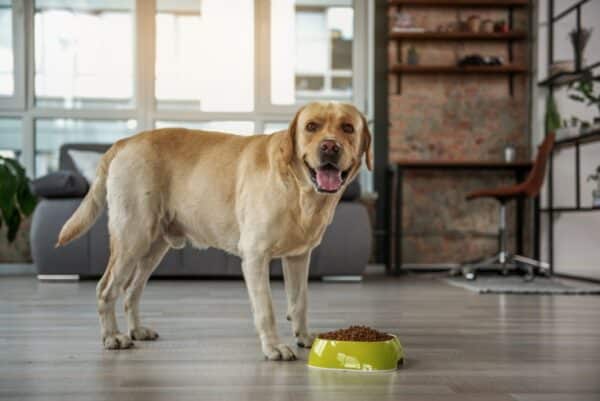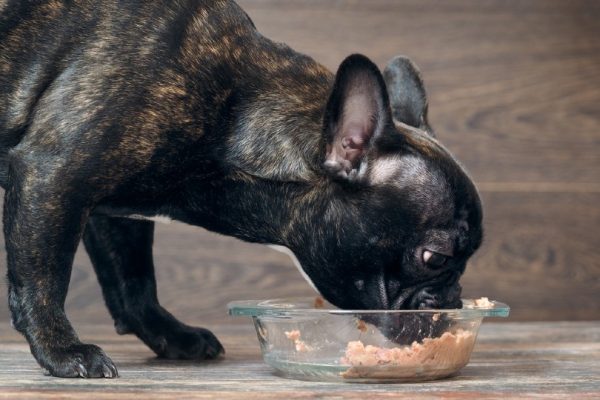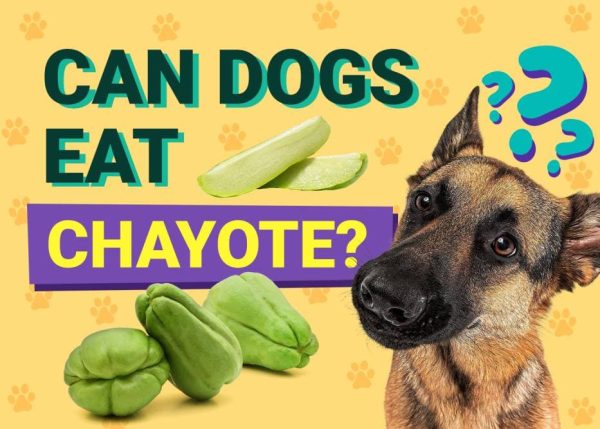City streets are a far cry from a dog’s natural environment, presenting plenty of problems when trying to keep them comfortable and well-behaved. Urban areas are bright, loud, and full of exciting sights and smells, and the cramped spaces leave little room for untethered exploration. Add it all together, and you get a stressful situation for many dogs and a frustrating training setting for owners.
Setting your dog up for success comes with unique struggles, but it gets immeasurably more manageable when you know where to focus your efforts and how to work with what the city gives you. We’ll help you get started by exploring common challenges with training your dog in the city and how to overcome them.

Dog Training in the City: Common Challenges & How to Overcome It

1. Where to Go Potty
Potty training is laborious but straightforward when you have a dedicated patch outside your apartment where your dog can do their business. Take them out whenever they need to potty, usually after meals or naps and before bedtime, and reward them for good potty habits outside.
Indoor Potty Options for City Apartments
If you don’t have an outdoor space where your dog can go potty, you may have to create one indoors. You have several options to give your dog a comfortable, absorbent space where they can potty without making a smelly mess to clean up, such as:
- Pee pads: Absorbent disposable pads that come in packs
- Fake turf: Fake turf pads are permeable and easy to clean and reuse while giving your dog a natural grass texture
- Living grass pads: Disposable grass pads absorb waste and offer a pleasing texture
- Indoor dog potties: Potty structures with drainage systems that allow for emptying liquid waste into a tray
To save time and effort, you can schedule replaceable surfaces like living grass or pee pads for recurring deliveries to your home. Many services offer replacements on weekly or monthly schedules, so you can dump your old one in the trash and always have a new one ready.
Using these surfaces isn’t natural for dogs, so you’ll have to patiently build positive associations with going potty. Take your pet to the spot frequently, especially when they would typically go potty, and if they pee or poop on it, give them praise and rewards. You can also build in a “go potty” command eventually. It is very important to note that having an indoor potty option should never replace your dog’s daily walks, which are of extreme importance for their well-being.
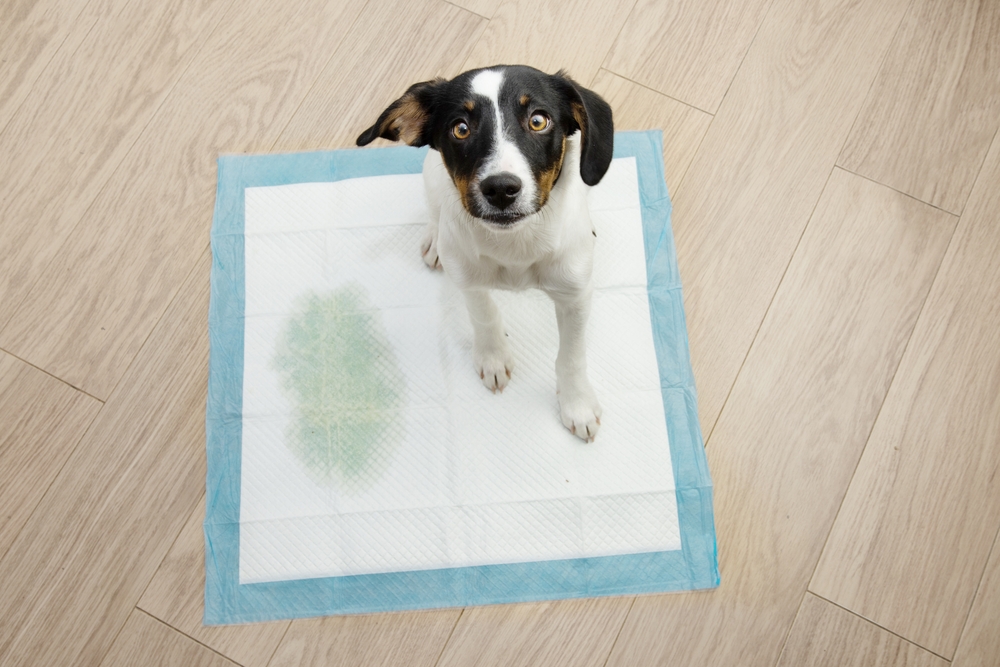
2. Overcoming Boredom
Enrichment is the key to keeping your dog calm, content, and well-mannered when you’re gone. Cramped apartments don’t offer much entertainment while you’re away at work, and the random noises of city life around your dog can cause their fair share of stress. But with enough distraction, your dog shouldn’t have any trouble staying occupied until you return.
Set your dog up with enrichment devices to keep them mentally and physically active. When you engage your dog as much as possible, you’ll wear them out and make them more likely to be relaxed and more receptive to training.
Effective enrichment ideas to occupy your dog include:
- Hide and seek with treats around your apartment
- Snuffle mats or treats rolled up into a towel
- Muffin tins with treats hidden under tennis balls or toys
- Feeder puzzle toys
- Lick Mats
Indoor Game Ideas
Engaging your dog’s natural prey drive is one of the best ways to make them happy and tire them out. A dog’s prey drive can emerge in various ways depending on the breed. If you experiment with different prey-driven games, like tug of war, fetch on the stairs, or hide and seek, you can find one that captures your dog’s attention.

3. Getting Enough Exercise
Busy city streets can overwhelm a dog and their owner, and much of the stop-and-go doesn’t lend itself to efficient exercise. Still, your dog needs a daily workout alongside mental enrichment to stay in shape, avoid boredom, and prevent obesity.
For an apartment-sized dog, a dog treadmill may be a good solution to give them an indoor workout but it should not be a substitute for outdoor exercise. You can also get creative with indoor agility, using chairs, pillows, brooms, and other household devices to train your dog on obstacles.
4. Stopping the Barking
Living in a city apartment puts you near your neighbors, often close enough to make your dog’s barking a significant disturbance to those around you. Unfortunately, the proximity also makes it more likely that your dog will bark in response to your neighbors coming and going. Plus, the daily stream of loud city noises can startle your pet throughout the day, making them yap incessantly.
How to Stop Your Dog’s Barking
Barking is normal dog behavior, but you can take steps to reduce it. First make sure they don’t get any reward from you when they bark, if you think they are barking to get your attention, try to ignore them. Minimizing your dog’s barking involves desensitizing them to the stimulus causing it.
If your neighbors are coming and going, praise your dog with treats for maintaining eye contact or following a simple command and not barking. Don’t hesitate to talk to your vet or canine behaviorist for professional advice on this common problem.
If you need to speak with a vet but can't get to one, head over to PangoVet. It's our online service where you can talk to a vet online and get the advice you need for your pet — all at an affordable price!

For other stimuli, like thunder, loud car-honking sounds, or neighbors thumping around upstairs, you can try desensitizing your dog by gradually introducing them to positive rewards. You can find audio samples of triggering noises online. Play them at low volumes first, giving treats to reward your dog for calm behavior.
As they get used to the sound and stay relaxed, you can up the volume until they’re comfortable at any volume. If you think your dog is suffering from noise fear you should always speak to your vet or dog behaviorist to evaluate the severity of your dog’s problem and elaborate a treatment plan for them. Nose fear is a very common behavioral problem in dogs, and can involve a great deal of suffering if not addressed adequately.
Management often involves behavior modification training as well as anti-anxiety medication for a period of time. You should offer praise and treats when your dog stays calm, ignore them when they bark, and not reward them in any way. At the same time, you must remove opportunities for your dog to bark to prevent them from practicing the behavior.

5. Preventing Separation Anxiety
Vibrant city life can often stress a dog out when they don’t have the secure base you provide as an owner. Separation anxiety is one of the most common behavioral problems in dogs, however, it doesn’t develop just by being left alone for several hours. There are many factors that determine whether a dog may suffer from separation anxiety, and likewise, there are factors that can protect them from it occurring. It is vital to speak to your vet if you think your dog may be suffering from separation anxiety.
When you’ve gone to work, separation anxiety quickly leads to problem behaviors like loud barking or indoor destruction in a confined apartment and it involves a significant level of suffering for your dog.
While exercise and enrichment are crucial in exhausting your dog’s energy and keeping them cooperative, crate training can work very well for some dogs to make them feel secure when left to their devices. Crate training dogs take advantage of their natural instinct to seek a quiet and safe place to retreat when they need to. It’s important to remember that this option doesn’t suit every dog. Using the crate can be very useful for dogs to develop good potty habits and comfort while alone, and even older dogs can learn to find reassurance and enjoyment in their den.
Crate Training Your Dog
To begin crate training choose the crate location carefully. Place it in an area where you and your dog typically spend plenty of time. Keep the door open and introduce your dog gradually. Create positive associations by rewarding your dog for going in the crate and staying relaxed. After they become used to the idea of the crate, you can try leaving the room for short periods.
Start leaving the room for only a few seconds initially, and add more time as your dog learns to stay calm while you’re away. Praise and reward them whenever they keep calm while you’re out of sight.
To build positive feelings toward the crate, give your dog high-value treats for going into it and make it comfortable with soft bedding and unique toys your dog only gets in the crate.
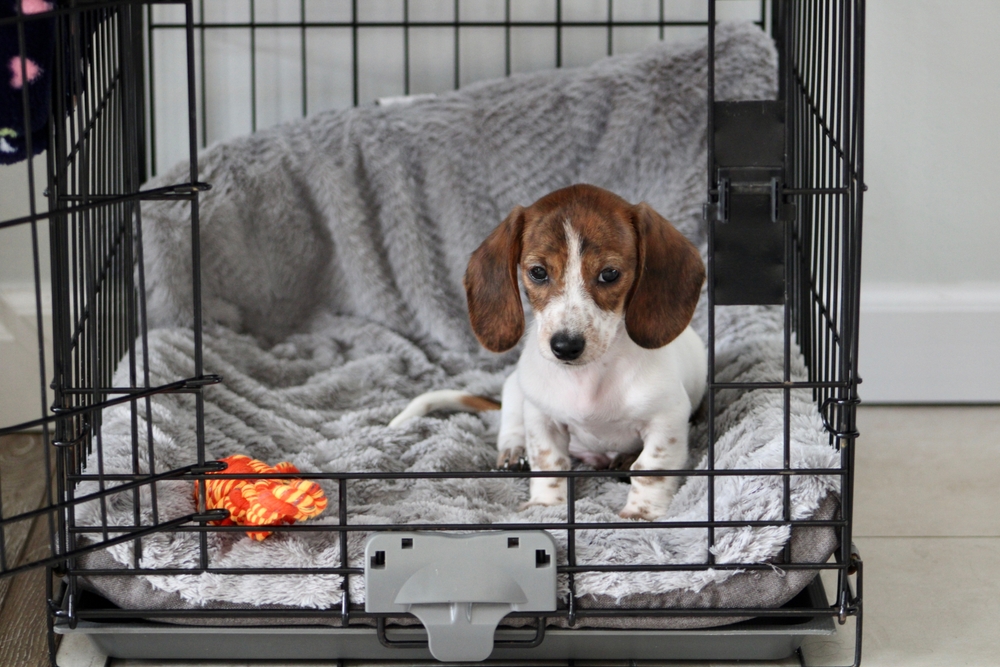
Medications and Behavioral Treatment
While crate training can help some dogs feel more secure, others can show increased signs of stress, such as hypersalivation and urination. For these dogs, you should find an alternative way to keep them calmo, such as a doggy daycare that can provide attention and care when you’re out of the house. Otherwise, you may be able to arrange for a neighbor or pet-sitting service to check on and walk your dog.
Your vet can offer suggestions on certain medications or household calming tools. Non-medicated devices like pheromone diffusers may help your dog relax. Paired with behavioral treatments like desensitization to stressors and extra enrichment devices, they can help your dog cope with city life and reduce many of their anxious habits.

Final Thoughts
City living adds some levels of difficulty to owning a pet, but there’s no reason why prepared owners can’t enjoy the benefits of canine companionship. Dogs offer ongoing companionship and comfort to overcome the stress of the hustle and bustle and will be waiting for you to enjoy a good walk to bring you closer together.
By following these tips to overcome the challenges of training your dog in the city, you can ensure you and your dog get the most from your metropolitan lifestyle.
Featured Image Credit: O_Lypa, Shutterstock

